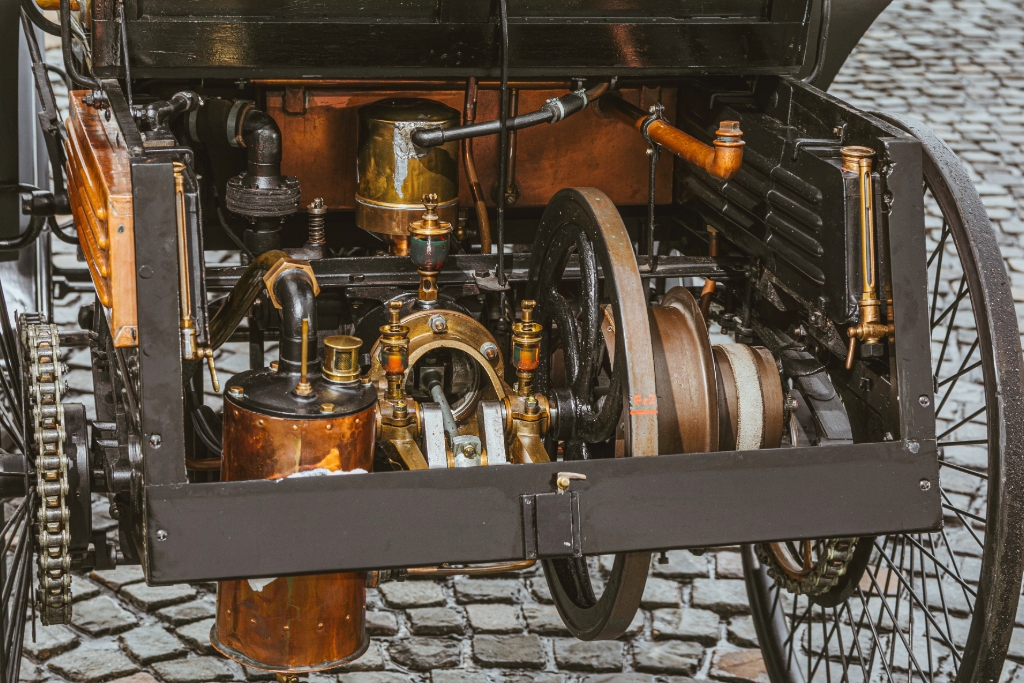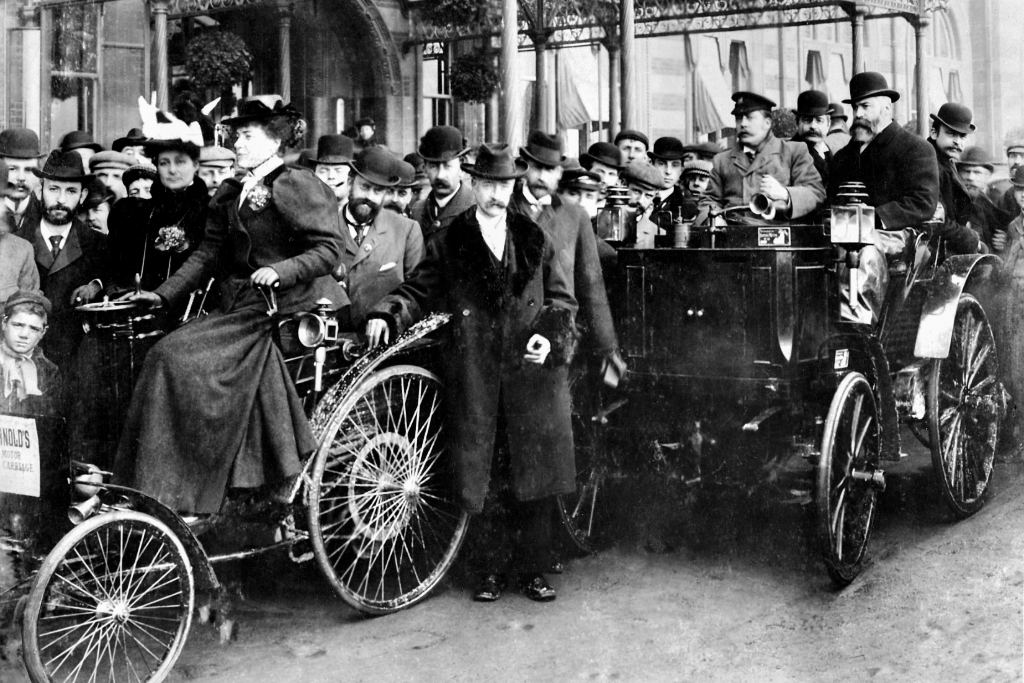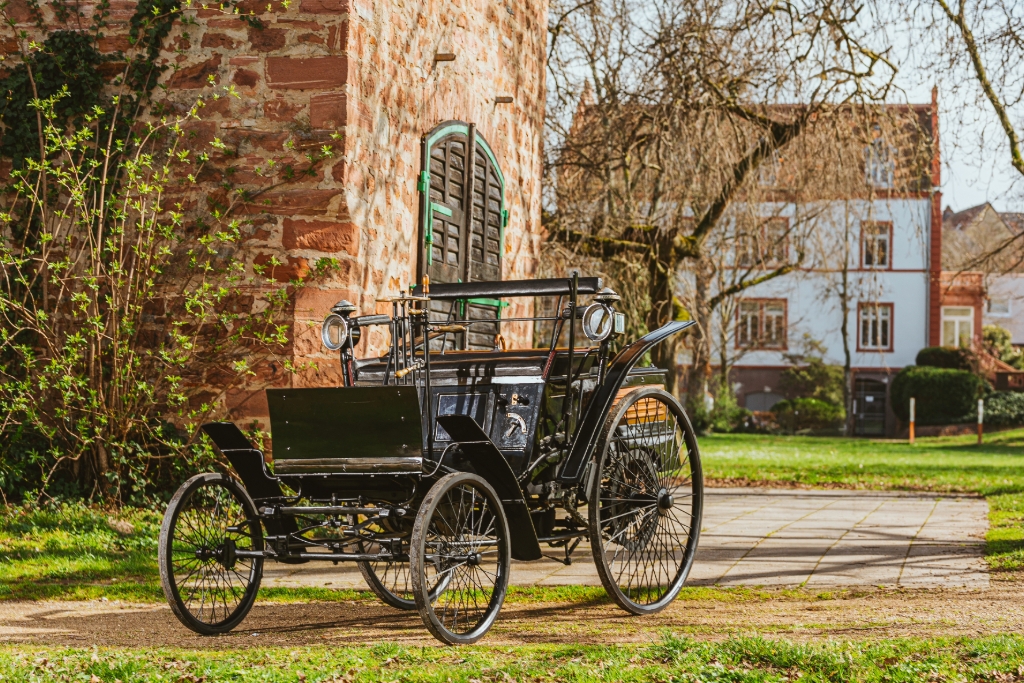Mercedes-Benz brings back the Benz Motor-Velocipede
09 Apr 2024|331 views
In celebration of its anniversary year at the Mercedes-Benz plant in Sindelfingen, the 130-year-old Benz Motor-Velocipede has made its first outing onto public roads.
Sindelfingen is also home of Factory 56, which houses state-of-the-art production technology. Innovative projects, such as the production of the first ever series-production car 130 years ago and more recently, the use of humanoid robots for production logistics, have taken place at the plant in southern Germany.
Mercedes-Benz Classic states that the vehicle was carefully prepared to ensure that it is able to drive with the highest standards of originality. To achieve this, extensive historical documents and information were pulled out of the Mercedes-Benz Classic archives. The vehicle was previously displayed at the Mercedes-Benz Museum.
In 1894, the Benz Motor-Velocipede was considered a turning point in automobile history due to its lightweight construction. Also known as the 'Velo', the model is widely considered to be first series-production passenger car in history. Approximately 1,200 models were built at the Benz factory in Mannheim between 1894 and 1902. As automobile inventor Carl Benz remembers, there was a high demand for the vehicle, with whatever that was made being sold immediately.
In 1894, the Velocipede engine was apparently able to produce 1.4bhp. Two years later, the vehicle managed to hit a top speed of 20km/h.
As innovation progressed at a rapid pace, Benz started offering more powerful engines on top of additional equipment options. A luxury version of the Motor-Velocipede, the Benz Comfortable, was crafted with a longer body, a third gear which came at an extra cost, more elaborated seat upholstery, a rear-facing child seat, and a crank for easier starting.
The vehicle was produced as the Benz Motor-Velocipede until 1900, before the Benz Comfortable came along in 1902.
Thereafter, the model family was developed further. The most notable upgrade included an increased power output of 28.5% in just one year.
Offered in German, English and French, trilingual catalogues prove the export success of the model family. In 1895, Benz granted a licence to Arnold, a British engineering company, to produce the Motor-Velocipede. This resulted in the "Arnold Motor Carriage" being one of the first British automobiles.
Throughout the year, the Velo can be expected to make appearances on public roads during various events.
In celebration of its anniversary year at the Mercedes-Benz plant in Sindelfingen, the 130-year-old Benz Motor-Velocipede has made its first outing onto public roads.
Sindelfingen is also home of Factory 56, which houses state-of-the-art production technology. Innovative projects, such as the production of the first ever series-production car 130 years ago and more recently, the use of humanoid robots for production logistics, have taken place at the plant in southern Germany.
Mercedes-Benz Classic states that the vehicle was carefully prepared to ensure that it is able to drive with the highest standards of originality. To achieve this, extensive historical documents and information were pulled out of the Mercedes-Benz Classic archives. The vehicle was previously displayed at the Mercedes-Benz Museum.
In 1894, the Benz Motor-Velocipede was considered a turning point in automobile history due to its lightweight construction. Also known as the 'Velo', the model is widely considered to be first series-production passenger car in history. Approximately 1,200 models were built at the Benz factory in Mannheim between 1894 and 1902. As automobile inventor Carl Benz remembers, there was a high demand for the vehicle, with whatever that was made being sold immediately.
In 1894, the Velocipede engine was apparently able to produce 1.4bhp. Two years later, the vehicle managed to hit a top speed of 20km/h.
As innovation progressed at a rapid pace, Benz started offering more powerful engines on top of additional equipment options. A luxury version of the Motor-Velocipede, the Benz Comfortable, was crafted with a longer body, a third gear which came at an extra cost, more elaborated seat upholstery, a rear-facing child seat, and a crank for easier starting.
The vehicle was produced as the Benz Motor-Velocipede until 1900, before the Benz Comfortable came along in 1902.
Thereafter, the model family was developed further. The most notable upgrade included an increased power output of 28.5% in just one year.
Offered in German, English and French, trilingual catalogues prove the export success of the model family. In 1895, Benz granted a licence to Arnold, a British engineering company, to produce the Motor-Velocipede. This resulted in the "Arnold Motor Carriage" being one of the first British automobiles.
Throughout the year, the Velo can be expected to make appearances on public roads during various events.
Latest COE Prices
November 2025 | 2nd BIDDING
NEXT TENDER: 03 Dec 2025
CAT A$109,000
CAT B$129,890
CAT C$76,389
CAT E$125,001
View Full Results Thank You For Your Subscription.































